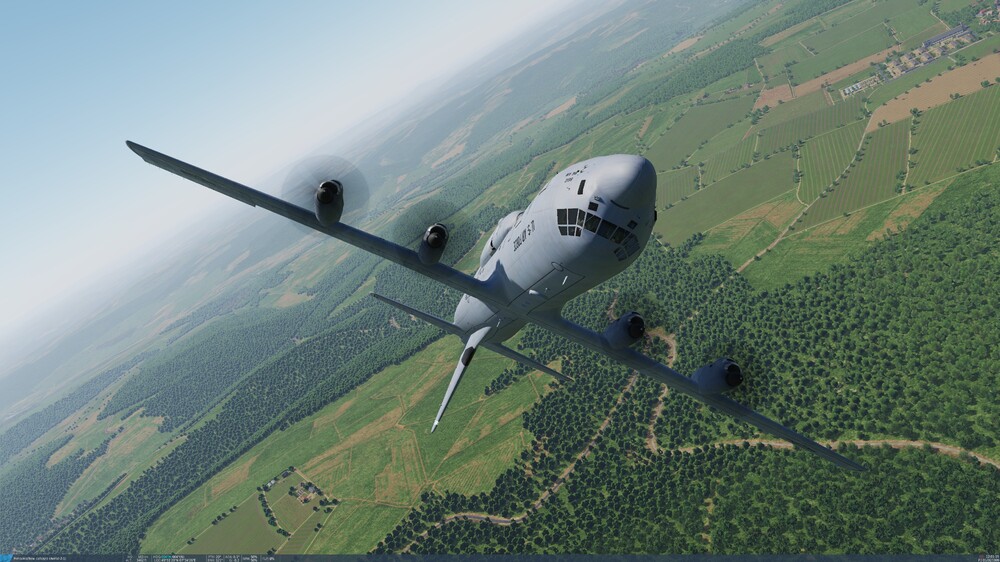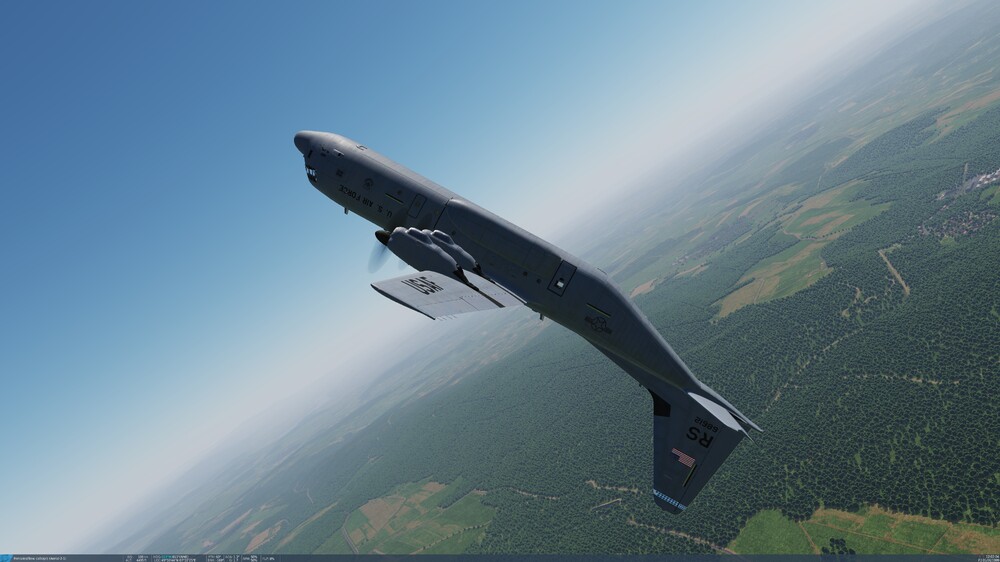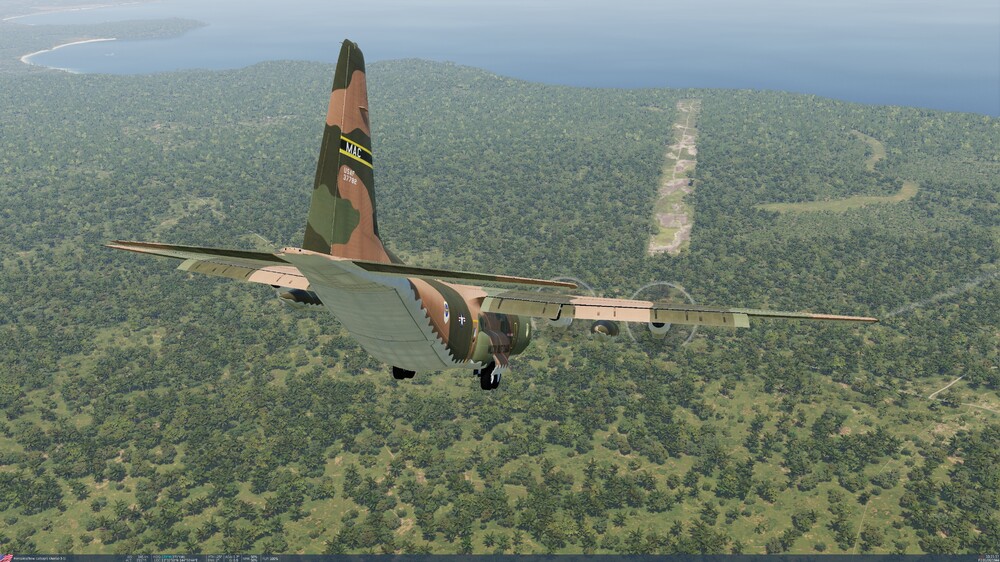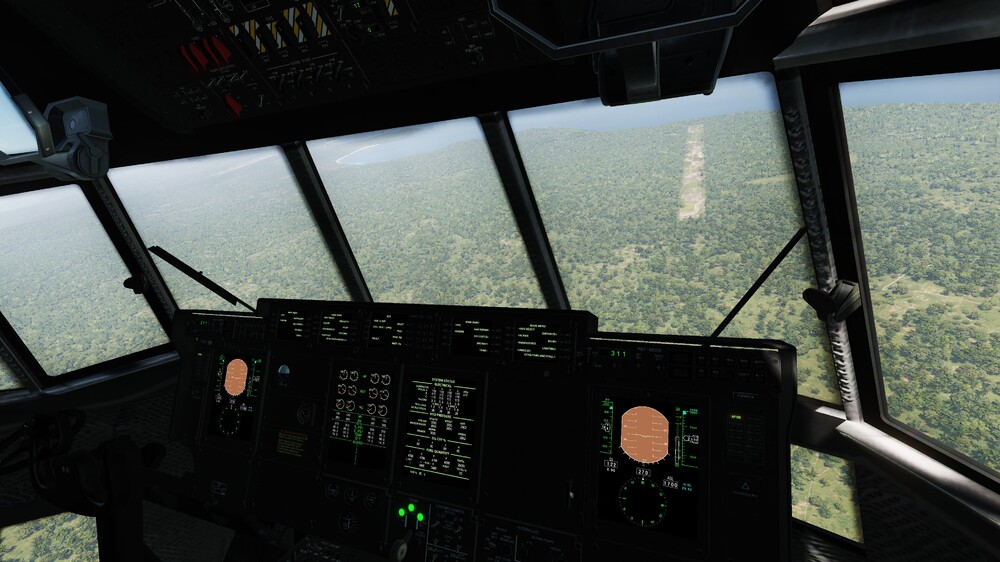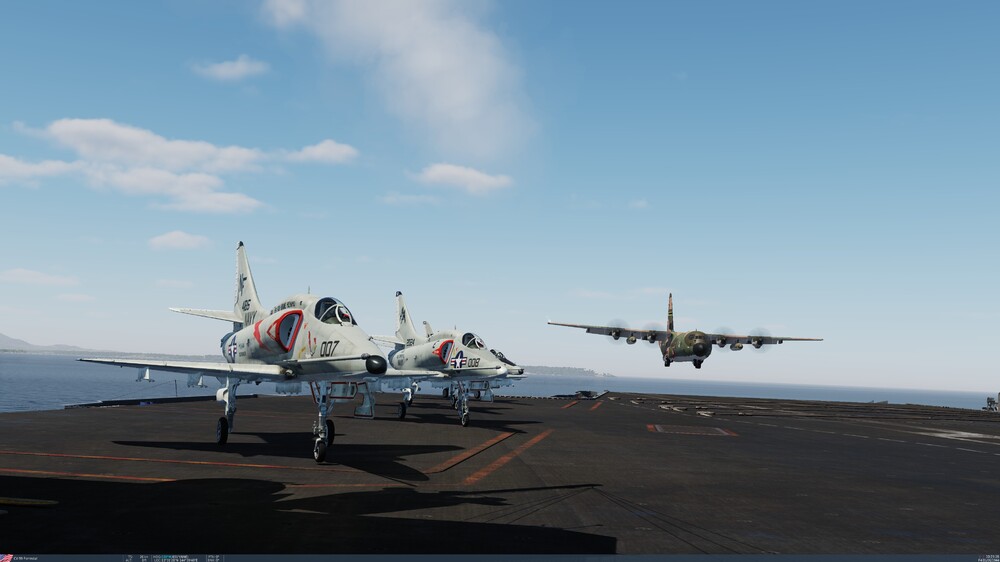

carbolicus
Members-
Posts
76 -
Joined
-
Last visited
Recent Profile Visitors
The recent visitors block is disabled and is not being shown to other users.
-
Very true. I’d prefer it if both aileron and rudder trim were always set to neutral when you start a mission, as generally speaking that’s where they will be needed for most of a flight. Correct flying technique requires constant use of pitch trim in order to set the required performance. But on the other hand, aileron and rudder trim deviation from neutral is usually only helpful for long climbs and descents. The exception is the case of high-powered prop aircraft such as warbirds, where of course we also need to set aileron and rudder trim for take-off as torque is much greater than for things like Cessna singles. And as the F4U is a carrier aircraft and hence will approach in a low-speed/high power scenario, it makes sense to adjust rudder and aileron trim also before landing so you won’t lose it if you have to apply full power at a low airspeed to go-around. But generally speaking it’s best to keep wings level with the control column and get used to using the rudder to keep the aircraft in balance rather than constantly fiddling with the trim. You never alter aileron and rudder trim when flying aerobatics for example, you just apply the appropriate stick and rudder pressures to get the performance you want, at speeds which will range from below the normal stall speed right up to VNE.
-
Thanks for the info GT, very interesting. I’ve certainly tamed it with curves and I really like flying it in DCS, so I think the developers have done a great job!
-
True enough re the large rudder, but you’ve still got the surface area of the fuselage providing a damping effect as well. Also in-flight cockpit videos of Corsairs in the circuit show no sign of the nose nodding around, but the pilot must be using the rudder frequently with all the power changes going on. But hey, I’m no expert aerodynamicist, and as you say, there are other design factors which might make a difference. Just find it hard to believe that any real aeroplane would be passed by a test pilot as acceptable for an average pilot to fly when it seems to shear around so much! Need some input from a real Corsair pilot here I guess!
-
I do think that the nose nods from side to side with rudder inputs a lot more than it should. This is also a problem with other flight sims such as the (generally excellent) Cliffs Of Dover. The whole point of the fin is to damp this kind of thing; it’s why the fin has a much greater surface area than the rudder. I’ve obviously never flown a Corsair, but in all the different types I’ve flown IRL, including aerobatic aeroplanes, when you apply rudder by itself the nose swings smoothly together with a bit of roll (secondary effect as the outer wing speeds up a little), and it swings smoothly back when you take the rudder off again. All the nodding around makes it very difficult to either side slip or do a decent stall turn in DCS - both manoeuvres are easy IRL.
-
Many thanks again for this, one of the most satisfying experiences in DCS is flying a Phantom or A10C on instruments in bad weather or at night and concluding with an ILS approach. The more that are working properly the better! It’s harder work with older aircraft with quirky autopilots, and using radio nav aids only, but it’s how the old guys did it! Looking forward to doing it in the C130J now!
-
Looks like this will be amazing! Thanks to an RAF mate, years ago I flew the C130J full motion simulator, which is supposed to be so faithful to the real thing that the OCU course was mostly done in the simulator. As Growling Sidewinder says, take-off is tricky until you get used to it due to the strong yaw forces from the powerful prop torque. If you have only flown jets in DCS then may not be expecting this. I flew relatively powerful prop aircraft when I worked as a bush pilot so I was expecting to need a lot of rudder in the C130J, but the amount needed did surprise me. Growling Sidewinder was also using aileron to help correct, which isn’t ideal, hence dipping a wing on take-off. I also found my old ATC logbook recently; I logged about 20 hours of flying in C130Ks as a 14 to 16 year old cadet, mostly on the flight deck standing behind the captain’s seat or sitting on the rest bunk at the back. One trip was a low-level cross country through the mountains of Scotland; we were third in a line-astern formation of 10 Hercs; absolutely unforgettable. I also remember on one trip being in the freight hold whilst dropping supplies out the back, low-level at RAF Hullavington. It was those experiences, plus flying in Chipmunks and Kirby Cadet gliders, which got me set on an aviation career. So for all sorts of reasons this module is a must-have for me!
- 20 replies
-
- 13
-

-
Can't wait for the new Hercules, but in the meantime I've been having some fun in the free mod. Here's some aerobatics, a Khe Sanh landing, and a carrier landing:
-
- 6
-

-
Anyone else feel that the rudder is far too effective at low airspeeds? Even at the start of take-off it feel to me like it’s linked to non-existent nosewheel steering! However big a rudder might be, it is pretty ineffective until you’ve got at least a few knots of airspeed over it, even with all that prop slipstream. It also seems over-effective in the air in slow flight, especially with power off. Still, maybe I’m wrong, i’ve never flown a high-powered warbird. Just doesn’t quite feel right in my experience.
-

Random loss of bindings and trim settings
carbolicus replied to carbolicus's topic in Bugs and Problems
Hi GT FreeFlyer - Yes, before the recent FM update the 6 degrees right aileron trim was necessary - but now I find it isn’t, so has the flight model been dumbed down a bit? -
Since the last update I have found that sometimes after loading a mission some bindings don’t work, such as trims and wing fold/unfold - when I quit out of the mission and re-start all is well. Also, since the flight model update I find that the default aileron trim setting of 6 degrees right is best re-set to 0 degrees - no problem with that as long as you remember to set it to 0 before take-off. However, sometimes, wherever the aileron trim is set, I get an uncontrollable roll to the left. Again, if I re-start the mission all is well.
-
Generally speaking the prop pitch should be set to max RPM on approach so you’ve got the optimum setting for a go around, and also the best response when making power adjustments at a relatively low airspeed. (However, I know little about high-powered warbirds and it’s possible the SOP was to have the recommended RPM set a bit lower so there was less torque when applying full power for a go-around? - one for the experts!) But if you’re trimmed out properly then the idea is to react instantly to any deviation from glideslope and airspeed, so things don’t get out of hand and you don’t need any major control inputs which de-stabilise you. Convention is to use elevator to maintain airspeed, and power to maintain rate of descent - but bear in mind that at low short-field approach speeds power is more or less the most important control, because you are speed-unstable. Hence power adjustments are your primary control for both airspeed and rate of descent.
-
Hey waterman - don’t be discouraged, the trains look authentic and fantastic, it’s people like you doing stuff like this that brings DCS to life!
-
If you’re not pedalling away like you’re riding a bike, you’re not doing it right. Especially with high-powered tail-dragger props, on take-off and landing. Never flown a war-bird, but the F4U responses to control inputs are very believable to me. However, the lack of feedback through control feel, I think makes flying a PC sim more difficult than flying the real thing - I certainly find that to be so. By that I mean that the way the sim responds to control input seems realistic, but your only cues as to what is happening is what you see on your monitor or through your VR headset. In real flying, besides what you see out the window, you feel what’s happening through your hands, feet and backside (and the sound of the slipstream), which means you can respond more intuitively to all the yawing around you get when making frequent power adjustments as you endeavour to maintain the correct speed and rate of descent on approach. And this is all the more pronounced the slower you are flying. Carrier landings are effectively short-field ones. Whether force-feedback helps I can’t comment, I’ve never tried it.
-
Absolutely agree with the above post. Rudder trim should be used judiciously; much better to get used to using your feet a lot when you fly a high-powered prop aircraft. When flying a relatively high-powered single in a bush-flying environment, I never used rudder trim at all. The central position was about right for cruising and it was no labour to apply a bit of foot pressure on climbs and descents, although admittedly we never flew higher than 10,000 feet. We’d also quite often be using short-ish airstrips which were sometimes wet/soft, so you’d need to approach at a slower than normal speed, which meant you were on the back side of the drag curve and hence speed-unstable. This in turn meant that you’d frequently be making large power adjustments to keep both the speed right and on the glide path - and that meant rapid and significant rudder inputs, especially in hot and gusty conditions. So it was important that the rudder trim was central. It’s also easy to get way out of whack with trim when you also have aileron trim - there was a case in WW2 of a Halifax bomber declared ‘rogue’ by its inexperienced pilot because it wouldn’t fly straight. The station commander was suspicious, saw that the pilot had full rudder trim one way and full aileron the other, wound them both back to neutral and found the aeroplane flew perfectly.


